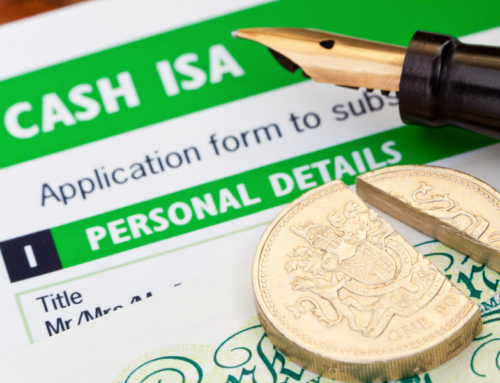 Part 6 in the series “What is the best way to save for retirement?”
Part 6 in the series “What is the best way to save for retirement?”
Inflation – Power to the people?
Inflation is probably the most underestimated factor within finance and economics. It has a massive impact on what you really need to do and frankly drives the need to ensure that your assets increase in-line with or preferably above the rate of inflation. This sounds easy, but it isn’t. You know all about inflation as it is, I don’t need to explain much. All I need do is ask you to remember going to the sweet shop and what you used to be able to buy, or perhaps how much you bought your first home for.
We forget what we don’t see
Inflation at the moment is historically low, despite what the media and politicians may suggest it is low. In fact ONS statistics reveal that the annual rate of RPI (retail price inflation) has not been above 5% since 1990. That’s now 24 years ago. It has varied since then between 0.7%-4.5%. This is why so few of us really give much thought to the impact of inflation. However, the longer term average rate of RPI since 1948 has been 5.5% and ranged between 2.9%-6.3% as a long term annual average. This was largely due to high levels of inflation in the 1970’s (24.9% in 1975) when we had a decade of high inflation rates, often forgotten, but which in turn led to tighter monetary control introduced as “Thatcherism”.
Size matters after all
My figures from the previous posts about the size of pot you need are therefore somewhat off. Why? Well because I suggested a target income of £20,000 a year from the age of 65, assuming a starting age of 35. I did this deliberately. Investors get really quite distressed by “real figures” the numbers invariably look too big and too terrifying. Here’s what I mean.
Warning: Explicit Information
£20,000 inflated at 3% a year for 30 years becomes £48,545. This is the same amount in real terms (if inflation runs at 3%). So I hope that you are sitting down. Rather than needing a pot of £500,000 to pay £20,000 a year (4% annuity) you really need £1,213,625 in real money. Yes that’s £1.2million. Rather than investing £305.69 a month (increasing by 3% a year) you actually need to invest £741.98 a month – more than double. You are no richer in reality; it’s just that inflation has been properly taken into account. The same facts are accurate, but the amount you really need to invest is considerably more.
Is time is on your side?
If you are rather closer to 65, say you are 50, you still have 15 years of inflation on £20,000 a year which becomes £31,160… worth the same amount… penny drops (literally) on the reason why I asked you to recall the childhood trip to the sweet shop. So in this example, a 4% annuity to provide £31,160 needs a fund of £779,000. You have 15 years to achieve this amount, hopefully you have made a start.
What about that buy to let property purchase idea?
So let’s turn to the property purchase option if you recall it. I suggested saving for 10 years for a deposit. Well starting with the end in mind we used a 5% rental yield. This would need to be £48,545 in 30 years time, so the property value would therefore need to be £970,900. So if property prices rise by inflation (3%) then you would need to be buying a property for roughly £400,000 and a 20% deposit would be £80,000 saved over the first 10 years, so rather than saving £214.71 a month, you really need to save around £450 a month (increasing by 3% each year for 10 years) and taking on a commercial mortgage for £320,000 – that’s quite a lot of debt.
Is it real?
The problem with real numbers is that they are pretty alarming. In reality you will hopefully have various sources of income for your retirement, hopefully including the State Pension. However the key issues are how well your portfolio performs and it will rise and fall in value which can be concerning. So its important that you consider the inflation adjusted or “real” returns. To give an example, the FTSE AllShare Index has averaged 5.9%pa above inflation since 1956. The average rate of inflation over the same period was 5.6% – so the actual FTSE AllShare return was 5.6%+5.9% = 11.5%. Since 1991 (to end of 2012) inflation has been 3% and FTSE AllShare real return 5.7% = actual returns of 8.7% but what you will notice is that the real return is pretty similar (over the longer term) at about 5.6% but not in the short term!
A suitable portfolio and strategy
Its important to get your investments right as in practice most people cannot stomach the volatility within shares. So you wouldn’t have all of your portfolio in shares, you would typically have some in Bonds and perhaps a bit in cash, thereby reducing but protecting the returns. Getting this balance right is not as simple as picking funds or using some sort of off the shelf “model” it needs to be thought through carefully…. Which is what I help clients do.
Its about your lifestyle, not the money
It goes without saying that £20,000 is not regarded as “a lot of money” by some people. In fact, £20,000 is a fair bit less than the average wage. However, great financial planning is not about value judgements about what is and what is not a small or large amount. No, its all about helping you to get clear about the lifestyle you want and what you need to do to achieve it, if that is possible, when considering your available resources, your appetite for and ability to take risk. When they say time is money, it is perhaps most pertinent in relation to inflation.
Was this helpful? Just plain scary? Too much? What questions do you now have? Email me or post a comment. Tomorrow I will conclude by providing some pointers to what I mean by “lifestyle”. Thanks for reading and here’s something you may remember from the 1970’s.
Dominic Thomas: Solomons IFA



